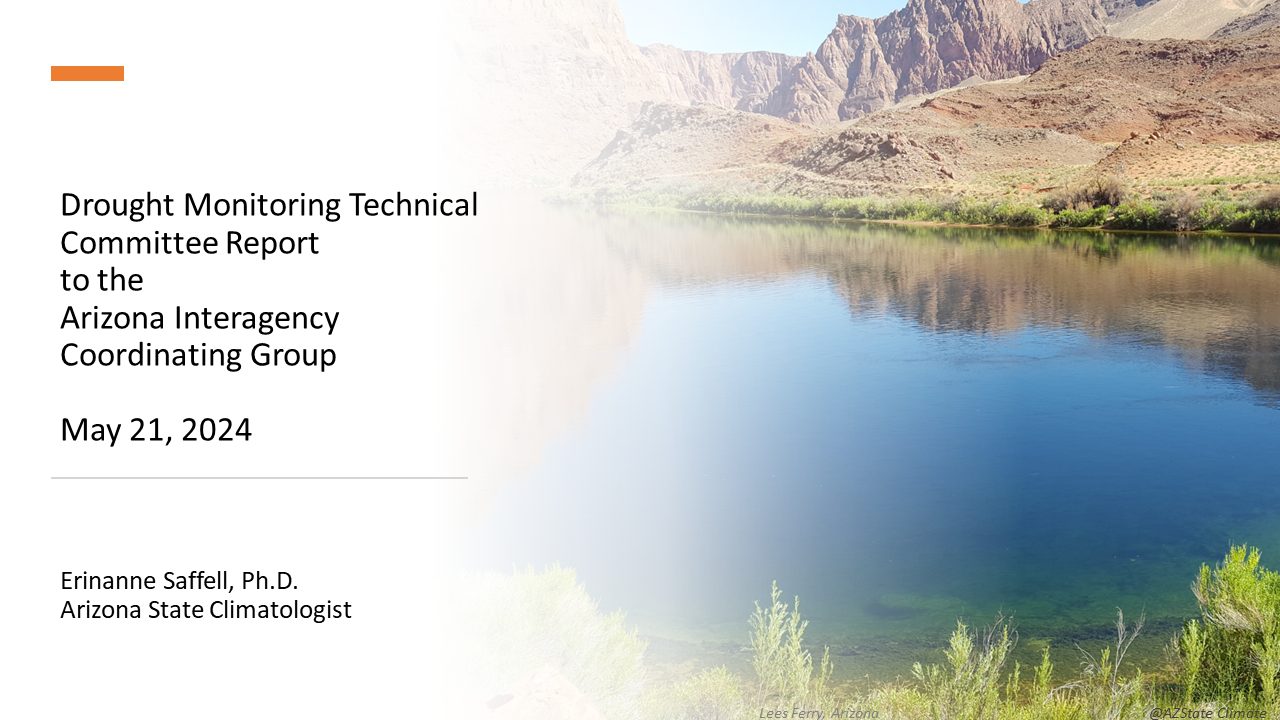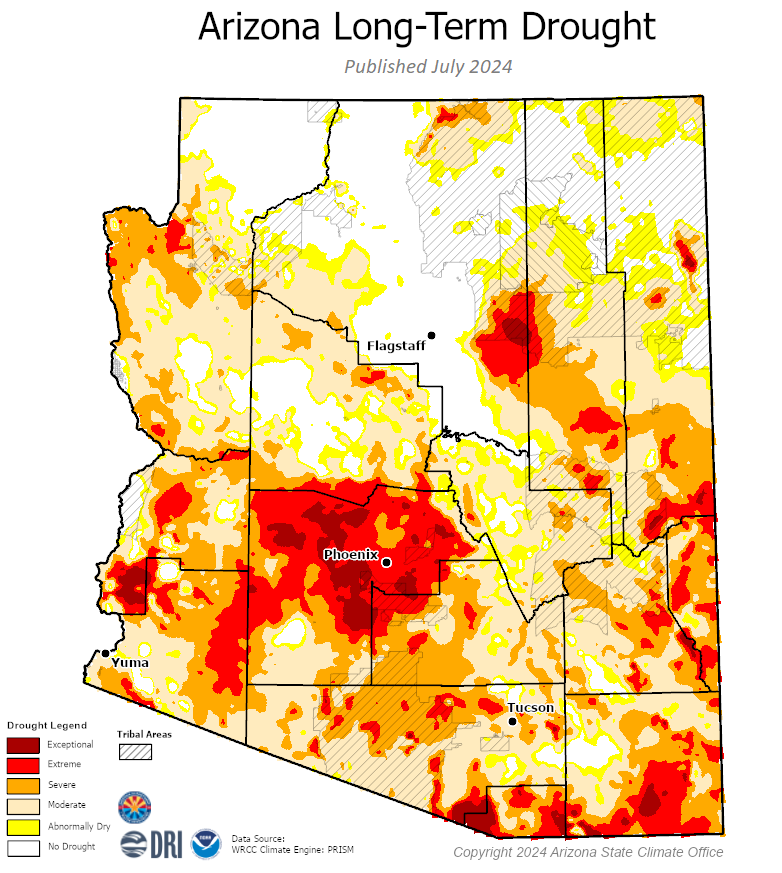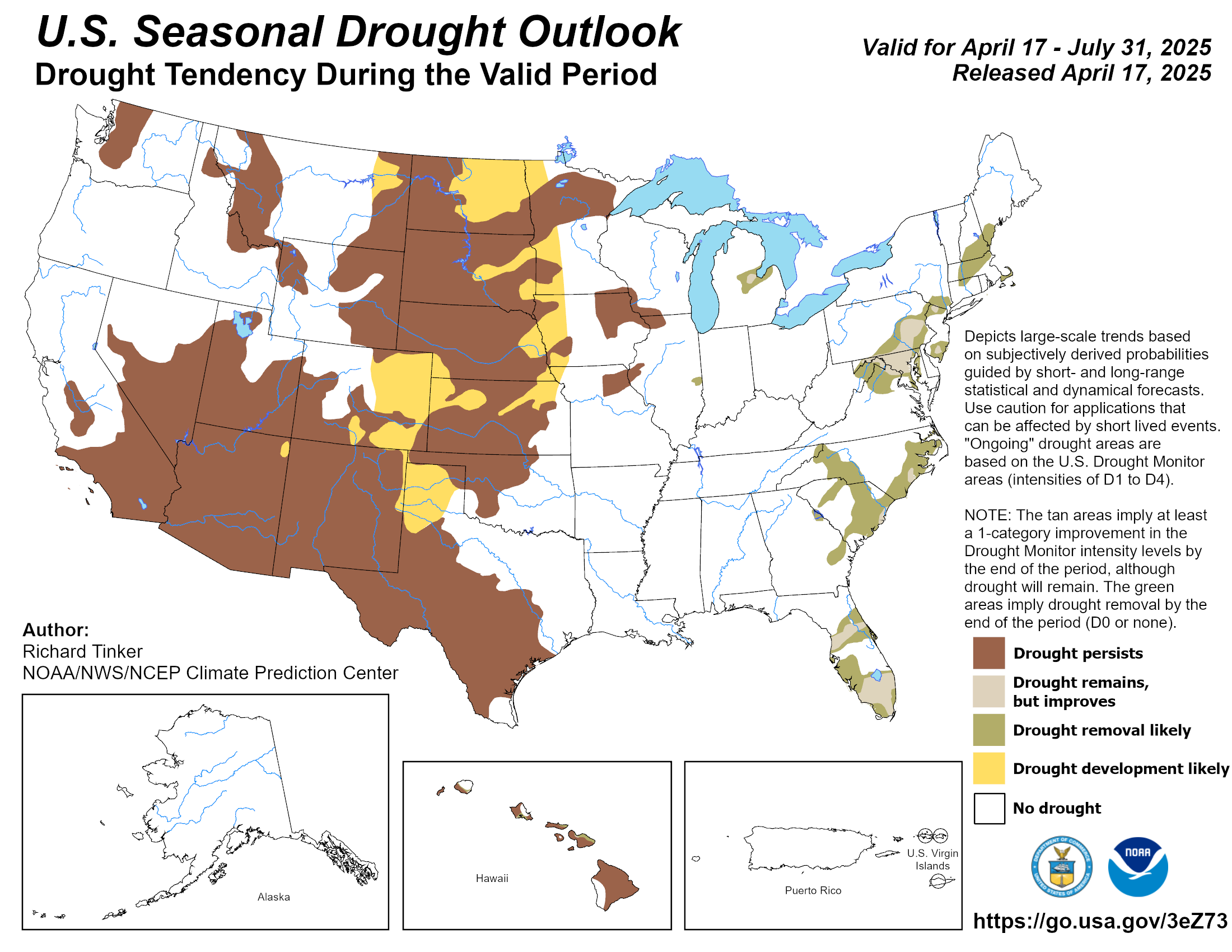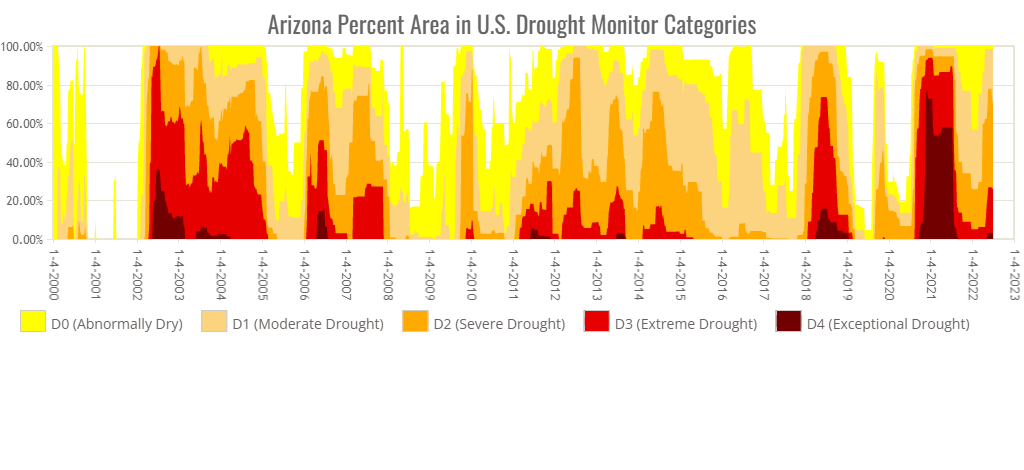
Drought
Arizona is currently in a long-term drought that started in 1994. Drought in the West is a long-term concept, which means that a single dry year does not constitute a drought in Arizona. Since Arizona has an arid and semi-arid climate, variable precipitation is a normal part of the climate regime. Drought is instead characterized by a string of dry years, occasionally interrupted by a wet year or two. Since 1994, most watersheds in the state have experienced only a total of nine or ten wet years.
The deep canyon topography of the Western U.S. is ideal for creating large reservoirs, such as Lake Mead and Lake Powell on the Colorado River, and Roosevelt Lake on the Salt River in Arizona. The reservoirs provide a means to assure water supply in dry years, provided the drought does not last too long. Read the history of the Salt-Verde Reservoir system on the SRP history website
The current status of Arizona’s reservoirs is on our Precipitation page.

Click on this image to access the water year report
 Short-Term Drought Status
Short-Term Drought Status
Short-term drought status is updated each Thursday with the publication of the U.S. Drought Monitor.
Drought is assessed weekly by the U.S. Drought Monitor team, supported by members of the Arizona Drought Monitoring Technical Committee (MTC).
The Arizona MTC provides a short-term drought report each month: Monthly Short-Term Drought Report
Drought impacts are variable and differ across the country. Read more about Drought Classifications.
Long-Term Drought Status
Long-term drought is assessed with the 24-month, 36-month, and 48-month Standardized Precipitation Evaporative Index. The SPEI takes into account precipitation and evaporation due to temperature. Long-term drought reflects water resources related to streamflow, aquifer recharge, and reservoir storage.
The Arizona MTC provides a long-term drought report each quarter: Quarterly Long-Term Drought Report



